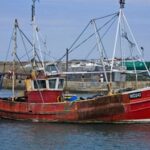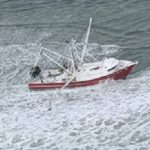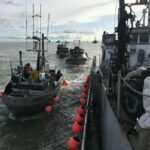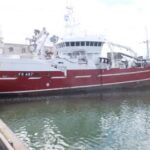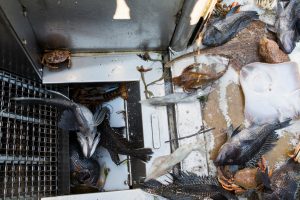Tag Archives: Idaho
Biden-Harris Administration Announces More Than $105 Million for West Coast and Alaska Salmon
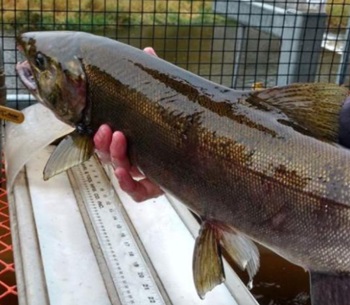 Today, the Department of Commerce and NOAA announced more than $105 million in recommended funding for 14 new and continuing salmon recovery projects and programs. Located along the West Coast and in Alaska, these state and tribal efforts will be funded through the Pacific Coastal Salmon Recovery Fund (PCSRF). The funds include Fiscal Year 2024 annual appropriations as well as $34.4 million under the Bipartisan Infrastructure Law and $7.5 million under the Inflation Reduction Act, and will aid programs and projects in Alaska, California, Idaho, Oregon and Washington that include habitat restoration, stock enhancement, sustainable fisheries and research and monitoring. “This $105 million investment, made possible thanks to the Biden-Harris Administration’s Investing in America agenda, will build on decades of salmon recovery work, while helping Pacific coast Tribes and Alaska Natives sustain their communities and cultural traditions in the face of climate change,” said U.S. Secretary of Commerce Gina Raimondo. “This is a result of the most ambitious climate agenda in history, and I am proud that nearly half of all funds in this announcement are being awarded to Tribal applicants.” more, >>CLICK TO READ<< 17:55
Today, the Department of Commerce and NOAA announced more than $105 million in recommended funding for 14 new and continuing salmon recovery projects and programs. Located along the West Coast and in Alaska, these state and tribal efforts will be funded through the Pacific Coastal Salmon Recovery Fund (PCSRF). The funds include Fiscal Year 2024 annual appropriations as well as $34.4 million under the Bipartisan Infrastructure Law and $7.5 million under the Inflation Reduction Act, and will aid programs and projects in Alaska, California, Idaho, Oregon and Washington that include habitat restoration, stock enhancement, sustainable fisheries and research and monitoring. “This $105 million investment, made possible thanks to the Biden-Harris Administration’s Investing in America agenda, will build on decades of salmon recovery work, while helping Pacific coast Tribes and Alaska Natives sustain their communities and cultural traditions in the face of climate change,” said U.S. Secretary of Commerce Gina Raimondo. “This is a result of the most ambitious climate agenda in history, and I am proud that nearly half of all funds in this announcement are being awarded to Tribal applicants.” more, >>CLICK TO READ<< 17:55
NOAA Recommends $106.1 Million in funding for West Coast and Alaska salmon recovery
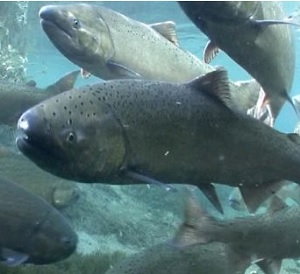 Today, the Department of Commerce and NOAA announced more than $106 million in recommended funding for 16 West Coast and Alaska state and tribal salmon recovery programs and projects under the Pacific Coastal Salmon Recovery Fund (PCSRF). The funds, including $34.4 million under the Bipartisan Infrastructure Law and $7.5 million under the Inflation Reduction Act, will support the recovery, conservation and resilience of Pacific salmon and steelhead in Alaska, California, Idaho, Oregon and Washington. This funding is part of President Biden’s historic Investing in America agenda, which includes over $2 billion for fish passage investments across the country. >click to read< 18:03
Today, the Department of Commerce and NOAA announced more than $106 million in recommended funding for 16 West Coast and Alaska state and tribal salmon recovery programs and projects under the Pacific Coastal Salmon Recovery Fund (PCSRF). The funds, including $34.4 million under the Bipartisan Infrastructure Law and $7.5 million under the Inflation Reduction Act, will support the recovery, conservation and resilience of Pacific salmon and steelhead in Alaska, California, Idaho, Oregon and Washington. This funding is part of President Biden’s historic Investing in America agenda, which includes over $2 billion for fish passage investments across the country. >click to read< 18:03
Opinion: Breach the Snake River dams? Only if you want more carbon and more expensive power
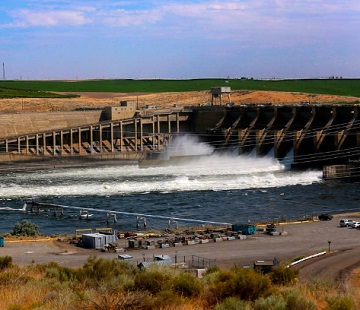 Recently our local papers have been publishing opinion pieces suggesting the possibility or necessity of removing the four lower Snake River dams to protect Idaho salmon runs. And earlier this year the Idaho Press published an article reporting that the Biden administration has released two reports stating that removal of the four dams on the lower Snake River “may be needed to restore salmon runs to sustainable levels.” There are other much cheaper alternatives that may be just as effective in preserving the salmon runs — maybe more. One would be to permanently remove the sea lions that congregate at the base of Bonneville Dam, the first dam on the Columbia River. Those sea lions decimate thousands of migrating salmon that gather around the base of the dam as they try to find the fish ladder over the dam. >click to read< 11:27
Recently our local papers have been publishing opinion pieces suggesting the possibility or necessity of removing the four lower Snake River dams to protect Idaho salmon runs. And earlier this year the Idaho Press published an article reporting that the Biden administration has released two reports stating that removal of the four dams on the lower Snake River “may be needed to restore salmon runs to sustainable levels.” There are other much cheaper alternatives that may be just as effective in preserving the salmon runs — maybe more. One would be to permanently remove the sea lions that congregate at the base of Bonneville Dam, the first dam on the Columbia River. Those sea lions decimate thousands of migrating salmon that gather around the base of the dam as they try to find the fish ladder over the dam. >click to read< 11:27
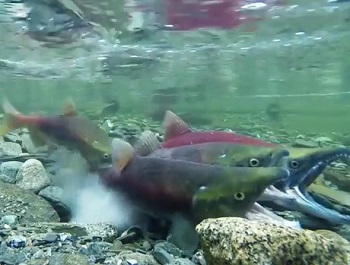
Northwest tribes unite over GOP congressman’s pitch to breach Lower Snake River dams
The Affiliated Tribes of Northwest Indians unanimously approved a resolution Thursday calling for breaching of the Lower Snake River dams to rebuild salmon runs, save endangered orcas and secure funding from Congress to replace the benefits of the dams. The group represents 57 Northwest tribal governments from Oregon, Washington, Idaho, Northern California, Southeast Alaska and Western Montana. A plan proposed by Congressman Mike Simpson, R-Idaho, to do just that was panned by key leaders in Washington state earlier this month. >click to read< 20:48
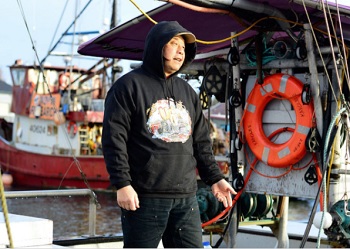
“What if the dams came out?” – Snake River dams proposal draws accolades, criticism – It will take an Act of Congress
It’s a “pinch me, this is real” moment, said Amy Grondin. So when she heard Republican U.S. Rep. Mike Simpson of Idaho announce a proposal to breach all four Lower Snake River dams, infamous for blocking salmon passage, she saw a ray of hope. Titled the Columbia Basin Fund, the plan calls for replacing the dams’ hydroelectric energy production with other sources. The fund also would ensure that flood control, farm irrigation and grain transportation are addressed, all to the tune of $33 billion. >click to read< 09:24
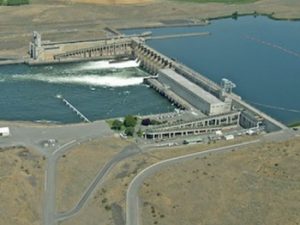
Feds reject removal of 4 US Northwest dams
The four dams on the lower Snake River are part of a vast and complex hydroelectric power system operated by the federal government in Washington, Oregon, Idaho and Montana. The massive dams, built in eastern Washington between 1961 and 1975, are at the center of a years-long battle that pits the fate of two iconic Pacific Northwest species — the salmon and the killer whale — against the need for plentiful, carbon-free power for the booming region.,, Snake River sockeye were the first species in the Columbia River Basin listed under the Endangered Species Act in 1991. Now, 13 salmon runs are listed as federally endangered or threatened. Four of those runs return to the Snake River. >click to read< 08:17
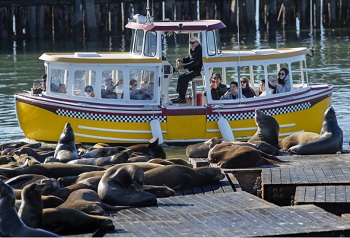
Sea lions are cash cows in the Bay Area. Farther south, fishermen say, ‘Shoot ‘em’
Sea lions are increasingly living in parallel universes along the California coast, a disparity best observed amid the noisy, stinking spectacle that rolls out daily at San Francisco’s Pier 39 shopping center. There, hundreds of these enormous, mostly male California sea lions bark, defecate, urinate and regurgitate, but are immensely popular with tourists.,, Officials in Washington, Oregon and Idaho are so irate at marauding sea lions that they have asked for federal permission to shoot certain ones identified as feasting on salmon and steelhead,,, >click to read< 10:01
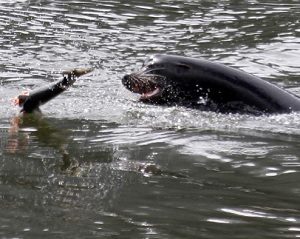
Proposal would kill more sea lions to protect fish
More than 1,100 sea lions could be killed annually along a stretch of the Columbia River on the Oregon-Washington border to boost faltering populations of salmon and steelhead, federal officials said Friday. The National Marine Fisheries Service said it’s taking public comments through Oct. 29 on the plan requested by Idaho, Oregon, Washington, and Native American tribes. The agency says billions of dollars on habitat restoration, fish passage at dams and other efforts have been spent in the three states in the last several decades to save 13 species of Columbia Basin salmon and steelhead protected under the Endangered Species Act. >click to read< 13:43
$13.5 million hatchery south of Blackfoot in eastern Idaho to be dedicated Friday will be capable of producing up to 1 million juvenile sockeye annually

Washington State Awarded $22 Million for Salmon Recovery – Pacific Coastal Salmon Recovery Fund
OLYMPIA – The Washington State Salmon Recovery Funding Board has received a $22 million federal grant to continue the state’s salmon recovery efforts in Washington. “A healthy Washington state economy is reliant on healthy salmon populations,” said Gov. Chris Gregoire. “Salmon support jobs and small businesses – especially our mom-and-pop tackle shops, restaurants, fishing guides and hotels. This grant not only will help Washington keep people employed, it will help our efforts to restore and protect our natural resources, making Washington a better place for all of us to live.” Of the $22 million, $15 million will be awarded by the Salmon Recovery Funding Board as competitive grants for projects statewide that will restore and protect the rivers, streams and bays that salmon need to recover. “The grant process is very competitive and works from the ground up,” said Kaleen Cottingham, director of the Recreation and Conservation Office, which administers the federal grant and supports the Salmon Recovery Funding Board. “Local communities wrote salmon recovery plans, which were approved by the National Oceanic and Atmospheric Administration (NOAA). Local watershed groups, called lead entities, select projects based on the priorities in those plans and community needs. State scientists review the projects to make sure they will be effective. The process helps us ensure we are investing in projects that will do the most to recover salmon.” Read more http://www.lakestevensjournal.com/county-state/article.exm/2012-09-06_washington_state_awarded__22_million_for_salmon_recovery
The federal Department of Commerce’s NOAA administers the fund and will competitively award the $65 million for Fiscal Year 2012 among the states of Washington, Oregon, Alaska, Idaho and California, and to the west coast tribes.
“We are pleased to continue this investment in salmon recovery in the Northwest,” said Will Stelle, NOAA’s Northwest regional administrator. “In addition to improving our environment, salmon restoration projects generate jobs on par with dollars spent on infrastructure projects like roads and highways.”


































